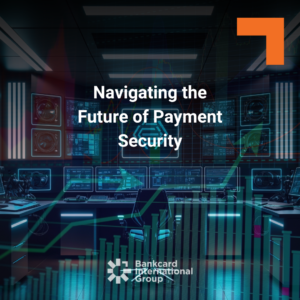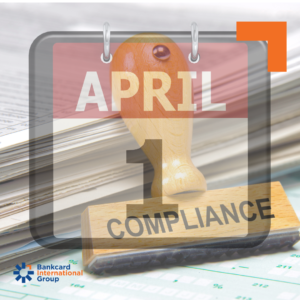Blog Breakdown: In a time when chargebacks, fraud and breaches are constantly increasing, VISA is combining programs to make payment security more streamlined, but merchants need to be ready.
- Understanding VAMP: Visa is consolidating its fraud and dispute monitoring programs into the new Acquirer Monitoring Program (VAMP), launching April 1, 2025, with stricter compliance requirements.
- Financial Implications: Non-compliance with VAMP thresholds could result in fines, increased fees, and potential account termination, while compliance may require investments in fraud prevention tools and staff training.
- Impact on Fraud Prevention: Merchants will need to adopt advanced fraud detection systems, stricter monitoring practices, and proactive dispute management to stay within Visa’s new limits.
- Potential Cost Increases: While Visa hasn’t explicitly announced higher processing rates, history suggests that regulatory changes often lead to increased interchange fees and operational costs for merchants.
- How BIG Can Help: Bankcard International Group (BIG) provides expert guidance, fraud prevention solutions, and tailored payment processing strategies to help merchants stay compliant and minimize costs under VAMP.
Navigating the Future of Payment Security: Understanding Visa’s Acquirer Monitoring Program (VAMP)
 In the ever-evolving landscape of payment processing, staying abreast of regulatory changes is crucial for businesses that accept credit cards. One significant development on the horizon is Visa’s revamped Acquirer Monitoring Program (VAMP). Set to launch on April 1, 2025, this program aims to enhance fraud prevention and streamline dispute management, but it also introduces new compliance requirements that could have substantial financial implications for merchants.
In the ever-evolving landscape of payment processing, staying abreast of regulatory changes is crucial for businesses that accept credit cards. One significant development on the horizon is Visa’s revamped Acquirer Monitoring Program (VAMP). Set to launch on April 1, 2025, this program aims to enhance fraud prevention and streamline dispute management, but it also introduces new compliance requirements that could have substantial financial implications for merchants.
Understanding Payment Security in the New VAMP
Visa’s current monitoring framework includes separate programs for fraud and disputes: the Visa Fraud Monitoring Program (VFMP) and the Visa Dispute Monitoring Program (VDMP). Starting April 1, 2025, these will be consolidated into the enhanced VAMP, creating a unified system to monitor and manage both fraud and disputes.
The new VAMP introduces updated compliance thresholds and performance metrics, requiring both acquirers and merchants to manage fraud and disputes more effectively. Non-compliance with VAMP’s thresholds will lead to fines or increased oversight, while aligning with the program can help reduce fraud losses and improve operational efficiency.
Financial Implications of VAMP for Merchants
 Non-compliance with VAMP’s April 1st, 2025 deadline means exceeding thresholds can lead to fines, increased oversight, or account shut down. Yet, aligning with the program can help reduce fraud losses and improve operational efficiency.
Non-compliance with VAMP’s April 1st, 2025 deadline means exceeding thresholds can lead to fines, increased oversight, or account shut down. Yet, aligning with the program can help reduce fraud losses and improve operational efficiency.
Merchants may need to invest in advanced fraud prevention tools and staff training to meet VAMP’s stricter requirements. While these investments can be substantial, they are essential for maintaining compliance and avoiding the financial penalties associated with non-compliance.
VAMP comes with financial implications that merchants need to prepare for. Businesses that exceed Visa’s fraud and dispute thresholds could face hefty fines, increased chargeback fees, and even the risk of account termination if compliance isn’t met.
Visa is tightening the reins on dispute ratios, and merchants need to take notice. Starting April 2025, acquirers must keep their dispute rates below 0.5% to avoid fines—a threshold that drops to 0.3% by January 2026. Merchants exceeding 0.9% will face penalties, including per-dispute fees. While Visa is offering a three-month grace period for first-time offenders, the takeaway is clear: fraud prevention isn’t optional anymore. To avoid these penalties, merchants may need to invest in advanced fraud prevention tools, enhanced security protocols, and staff training, all of which add to operational costs.
Additionally, while Visa has not explicitly stated that processing rates will increase, history shows that regulatory changes often lead to higher costs passed down to merchants through adjustments in interchange fees and acquiring bank policies. This means businesses should be proactive in assessing their current payment structure and working with a trusted payment processing partner like BIG to minimize costs while staying compliant with Visa’s evolving standards.
With non-compliance fees on the table and the likelihood of acquirers passing costs down to merchants, businesses—especially those in high-risk industries—must stay ahead of the curve to protect their bottom line.
Impact on Payment Security Fraud Prevention Strategies
VAMP’s stricter thresholds necessitate a proactive approach to fraud prevention. Merchants will need to implement advanced monitoring systems, fraud prevention measures, and thorough record-keeping to stay within the new limits.
Key strategies include:
- Enhanced Fraud Detection Tools: Implementing sophisticated fraud detection systems that can identify and prevent fraudulent transactions in real-time.
- Comprehensive Staff Training: Educating employees on the latest fraud trends and prevention techniques to ensure they can effectively manage and mitigate risks.
- Regular Monitoring and Reporting: Establishing routine monitoring of transaction patterns and maintaining detailed records to quickly identify and address potential issues.
- VAMP consolidates five existing fraud and dispute programs into a single acquirer program and streamlines 38 distinct remediation processes into one, effective April 1, 2025.
Preparing for VAMP Implementation
To prepare for VAMP’s implementation, merchants should:
- Assess Current Fraud and Dispute Metrics: Evaluate your current fraud and dispute ratios to determine how they align with VAMP’s new thresholds.
- Upgrade Fraud Prevention Measures: Invest in advanced fraud detection and prevention tools to reduce the likelihood of fraudulent transactions.
- Train Staff: Ensure your team is well-versed in fraud prevention strategies and understands the importance of compliance with VAMP’s requirements.
- Collaborate with Acquirers: Work closely with your acquiring bank to understand their expectations under VAMP and to develop a joint strategy for compliance.
- Stay Informed: Keep abreast of updates from Visa regarding VAMP to ensure your business remains compliant as the program evolves.
Visa’s new Acquirer Monitoring Program represents a significant shift in how fraud and disputes are managed within the payment processing ecosystem. While the program aims to enhance security and reduce fraud, it also imposes stricter compliance requirements that could have financial implications for merchants. By proactively adjusting fraud prevention strategies and ensuring adherence to VAMP’s guidelines, businesses can navigate these changes effectively and continue to accept credit cards securely and efficiently.
Looking for Payment Security Guidance?
At Bankcard International Group (BIG), we understand that adapting to Visa’s new Acquirer Monitoring Program (VAMP) can feel overwhelming for business owners. Staying compliant while keeping fraud and disputes under control requires expert guidance, cutting-edge technology, and a proactive approach. That’s where we come in. Our team specializes in high-risk payment processing, providing tailored fraud prevention solutions, chargeback management strategies, and hands-on support to help businesses accept credit cards securely and efficiently. Whether you need advanced fraud detection tools, compliance consulting, or a streamlined payment processing system, BIG is here to help you navigate these changes with confidence. Contact us today to ensure your business is prepared for VAMP and beyond.






